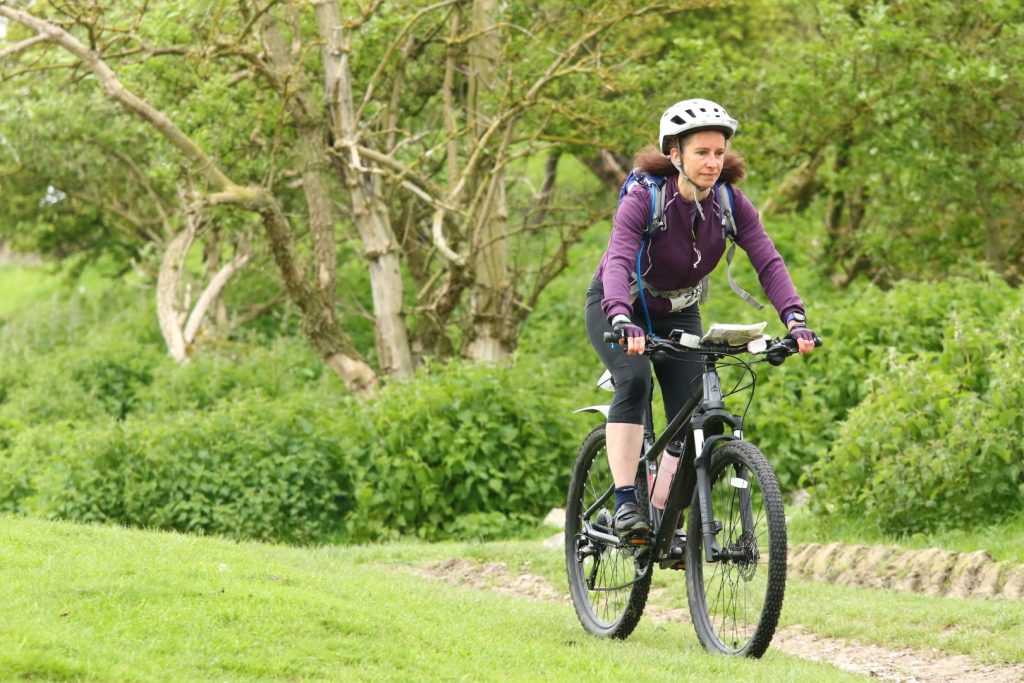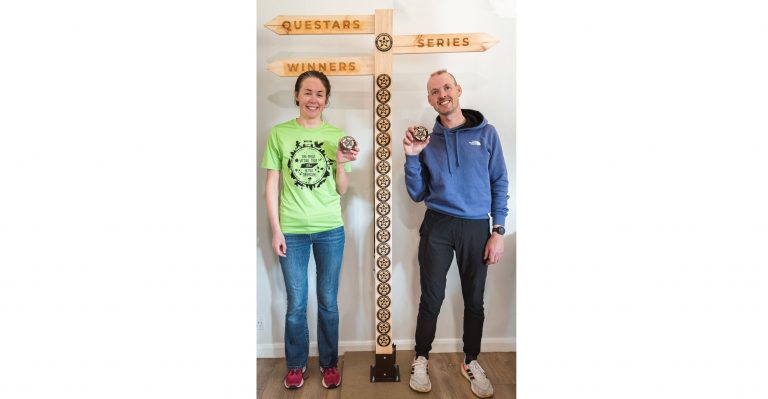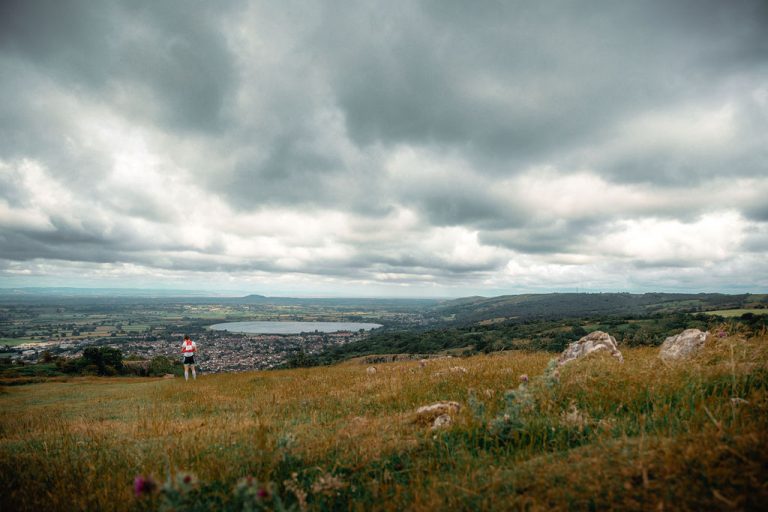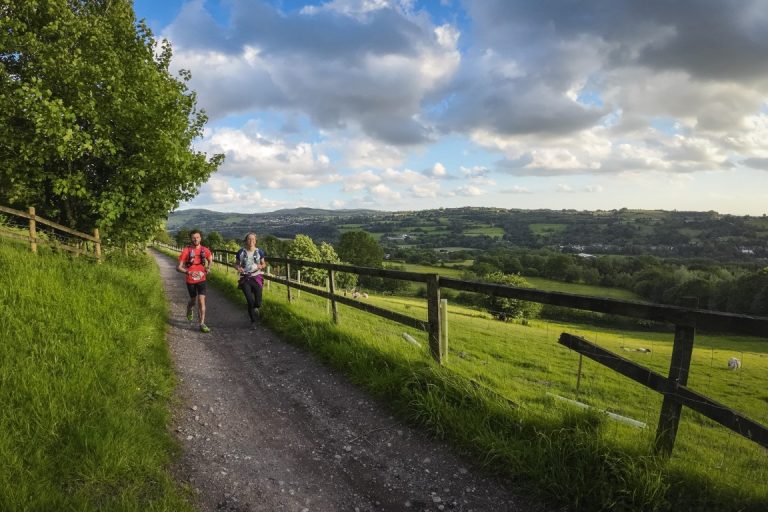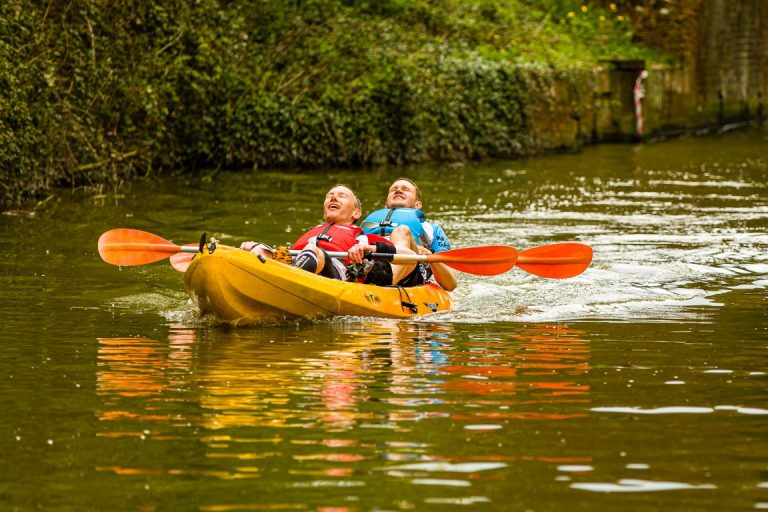
- Sarturday 30 December 2023
Our featured racer of the month is Julie Banton. Julie is a brilliant racer who is consistently on the podium and is a previous series winner. Here Julie shares her tips from over 15 years of Questars racing!
When did you participate in your first Questars adventure race?
Probably around 2007/08. I can’t remember where it was, but there was the novelty of racing in the ladies category for the first time, as I’d just met Pat, one of my teammates, who introduced me to Questars. Before that I’d only been in mixed teams.
Roughly how many Questars adventure races have you participated in?
No idea! If I had to hazard a guess, maybe 50–60?
What do you like most about adventure racing?
Being out in the countryside and exploring new areas. It’s always a bonus when you see some wildlife – nothing beats spotting a kingfisher or seeing deer eyes staring at you in the dark. I also like the variety of activities in adventure racing and that you can enjoy it in lots of different ways, from a sociable day out with friends to a competitive race. And the fact that sometimes the tortoise can beat the hare!
Why did you first get into adventure racing?
The first adventure race I did was the Blue Eskimo series in Scotland in 2001 – got talked into it by some friends. I guess that’s what got me hooked although I nearly got hypothermia overnight on the first event. That’s where I met my other teammate, Sarah. It’s also when I realised I really didn’t enjoy not sleeping, so I’ve stuck to one-day (or two-day) races like Questars ever since.
What advice would you give to someone just getting started in adventure racing?
Practice navigation at every opportunity. It’s no good being super fit if you are going in the wrong direction! And in a race, even if you are not the main navigator in your team, make sure you know where you are on the map. I was too lazy about navigating when I first started and just tagged along.
What is your strongest and weakest race discipline? How do you combat your weakest discipline?
My strongest is probably kayaking, as that was the first sport I got into as a teenager, having hated PE at school. I only took up running to improve my kayaking, and cycling was just what we did to get to the canoe club! I rarely kayak now except on adventure races, but I seem to get by on technique and that’s my favourite bit of the race as it feels like a nice sit down, haha.
My weakest is running as I’m always getting injured and so can’t train as much as I would like to. Hopefully I’ve got training for running while actually running as little as possible down to a fine art now!
What does your training plan for an adventure race look like?
In terms of general training, I do cycling and running for endurance (but I don’t do any great distances) and Pilates/ gym/ climbing wall for strength. I actually think long days out hillwalking are one of the best ways of training for adventure racing, although I don’t get out as often as I would like to.
How do you fuel yourself for a Questars adventure race?
Definitely porridge and a banana for breakfast. My go-to race food at the moment is Graze bars – they are only small, but I don’t seem to eat half as much during races as I used to!
What’s the worst mistake you’ve ever made during an adventure race?
I once lost my dibber, in the days when it was on a piece of string around your neck. I had to retrace my steps back to the previous checkpoint, where fortunately I found it hanging on a tree! You had to reach up really high to dib that control and it must have got stuck on a branch without me noticing.
What’s the weirdest/funniest/strangest thing that has happened to you during an adventure race?
Too many to mention, many involving unexpectedly deep puddles! Only a couple of years ago, Pat, Sarah and I were followed at pace down a field by an entire herd of cows; we were just hoping that we wouldn’t slip in the thick, wet mud and be trampled on. Another time we were pushing our bikes up a steep, rocky track and embarrassingly got overtaken by some sheep. More recently, I dibbed a checkpoint on the ground, then stood up and clonked my head on the fingerpost it was attached to – not recommended.
What is the most difficult part of adventure racing?
Well we all have our different challenges – mine has been nerve pain in my lower back and leg for the last 10 years so I’ve battled through a fair few races with a lot of discomfort and was always the one standing up in the briefing because I couldn’t actually sit down comfortably. Fortunately, chatting with Pat and Sarah would cheer me along, and a key feature of races was deciding which dream houses en route we would like to live in! Thankfully the pain is now controlled with medication and I can enjoy racing more again. I hope this encourages others who may not be feeling as fit as they would like to be – just give it a go anyway.
What are your top five tips for adventure racing success?
- Be flexible – it’s fine to change your plans during the race.
- Have a snack/drink while walking or pushing your bike up steep hills.
- Keep going, even if you think it’s not going well, as you don’t know how other teams are doing.
- Remember to enjoy the scenery!
- Don’t be late back. This one is probably the most important if you are just starting out.
Thank you Julie! A great write-up and some brilliant tips for anyone looking to improve their adventure racing.
Do you fancy giving adventure racing a go? Follow the link below to sign up to our next events:
The Questars Winter Series Championship
The Questars Winter Series Championship spans the four winter races starting in the South Downs in November and culminating in the Cotswolds in February. This series of races is not just about testing your physical limits but also about strategy and embracing the unexpected challenges that adventure racing throws your way. Full details can be found on our Series Championship page with the key details below:
- Your top three results count towards your series score so consistency and performance across multiple races matter.
- No registration is required to take part in the series – series scores are automatically calculated for every finisher of every race, irrespective of the number of races they’ve done.
- Series scores are calculated for every unique team member’s name so make sure your name is spelt the same for every race that you enter.
- Changing teams / team names throughout the series won’t affect your series score.
- Series prizes will be awarded to those at the top of the series leaderboard, i.e. those with the highest series scores, after the final race of the series. The competition is fierce, and the rewards are worth the effort!
- In the event of a tie at the top, head-to-head race results will be used to determine the series winner (i.e. who beat who in the races in which all the tied participants took part). If this is also tied then the combined times (only for these head-to-head races) will be used, with the person with the fastest cumulative time being crowned the series champion.
We look forward to seeing you soon for an adventure!
News Categories
2024 Adventure Races

